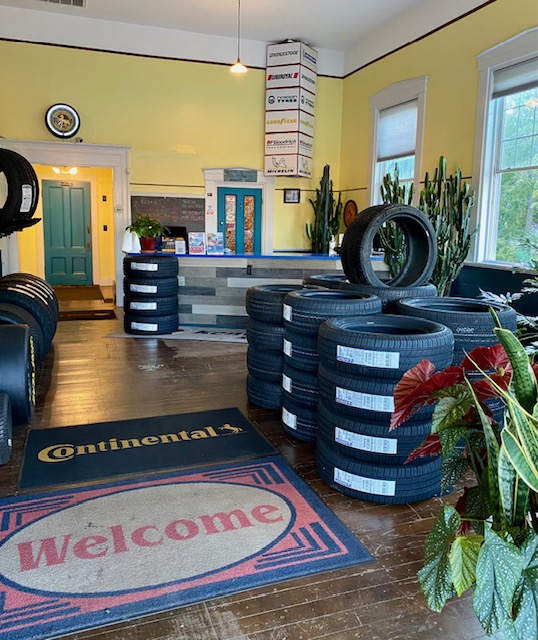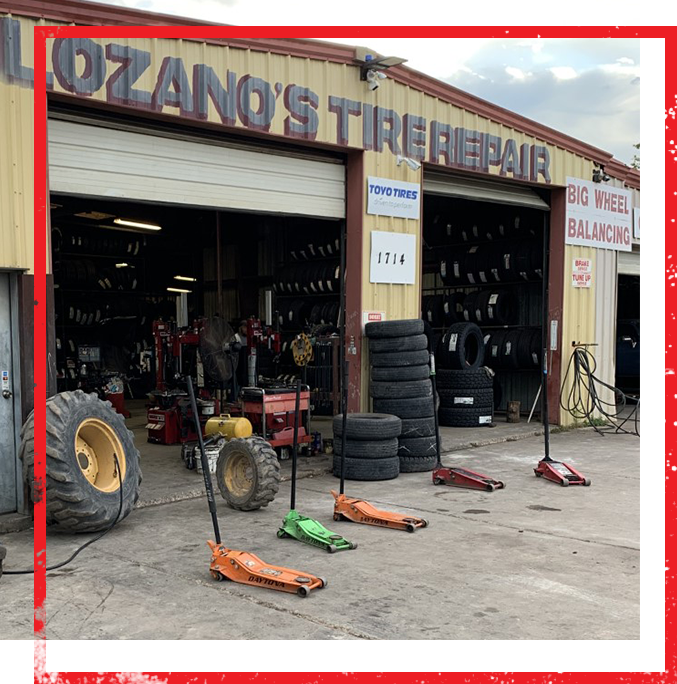
The Importance of Tire Solution for Safe Driving
The problem of your tires can significantly affect your automobile's performance and general security. From tire stress to tread depth, there are a number of vital factors to think about when it comes to tire solution. Allow's check out why tire service is an essential part of risk-free driving and just how it can make a substantial distinction in your overall driving experience.
Tire Stress Maintenance
Maintaining appropriate tire stress is crucial for guaranteeing ideal lorry efficiency and safety when driving. Appropriate tire stress not just boosts gas efficiency but also prolongs the life expectancy of the tires, minimizes the threat of crashes, and gives a smoother driving experience. When tires are underinflated, the contact patch-- the area where the tire satisfies the road-- boosts, causing extreme warm accumulation and prospective tire blowouts. On the other hand, overinflated tires reduce the get in touch with patch, leading to unequal tire wear and decreased traction.
To preserve the appropriate tire pressure, refer to the lorry supplier's suggestions normally discovered in the owner's manual or on a sticker label situated inside the chauffeur's side door jamb. Tire pressure should be examined at the very least when a month using a dependable pressure scale and changed as needed. In addition, it is a good idea to examine tire stress eventually trips or when carrying hefty tons to ensure secure handling and optimum efficiency. By prioritizing tire stress upkeep, chauffeurs can promote safer driving problems and lengthen the life of their tires.
Tread Deepness Evaluation
Proper tire pressure not just improves vehicle efficiency however additionally impacts step wear, making routine step deepness inspection necessary for safe driving. The walk depth of a tire is vital as it directly influences traction, specifically in wet or snowy conditions. Inadequate step depth can bring about reduced hold when driving, enhancing the threat of crashes. To guarantee ideal safety and security, chauffeurs need to routinely check their tire step deepness using a walk depth gauge. The suggested minimum step deepness is 2/32 of an inch; however, for enhanced efficiency, specifically in unfavorable climate condition, a step depth of 4/32 of an inch or more is recommended. Unequal step wear can show placement or suspension problems, better emphasizing the significance of regular step depth inspection. By keeping sufficient step depth, chauffeurs can enhance their lorry's handling, braking, and overall security on the road. Bear in mind, secure driving starts with correct tire upkeep, consisting of regular step deepness checks.
Routine Tire Rotations
By frequently revolving your tires, you help disperse put on more uniformly throughout all four tires. Front tires have a tendency to put on out more swiftly than back tires due to elements like guiding and stopping pressures.

Significance of Alignment Checks
Placement checks play an important role in making sure that the even use patterns attained with normal tire rotations are Click This Link preserved for optimum car efficiency and safety. When your automobile's wheels are not properly lined up, it can lead to irregular tire wear, affecting handling and gas performance.
Additionally, correct alignment improves road hold and stability, particularly when driving in difficult problems such as damp or icy roadways. By organizing routine placement checks, you can resolve any issues promptly, guaranteeing that your car operates at its finest and promoting general security on the roadway.
Indicators of Tire Put On
Maintaining alert monitoring of your tires' problem is extremely important to making certain secure and reliable driving methods. Among the crucial elements to look out for is tire wear, as it straight influences the performance and safety of your automobile. There are several signs that indicate your tires might be breaking. Uneven tread wear across the tire surface area can recommend alignment problems or incorrect inflation. useful site Bulges, cracks, or cuts on the sidewalls are warnings that the tire framework may be jeopardized. Tread deepness is likewise vital, and if it falls listed below 2/32 of an inch, it's time to change the tires visit homepage for optimal grip. Furthermore, vibrations, specifically at high speeds, could show tire imbalance or various other issues. On a regular basis inspecting for these signs of tire wear and resolving them promptly via professional examination and maintenance will certainly not only expand the life of your tires however also boost your safety when traveling.
Conclusion

From tire stress to walk deepness, there are a number of crucial variables to take into consideration when it comes to tire solution. When tires are underinflated, the call spot-- the location where the tire satisfies the roadway-- boosts, leading to extreme warm buildup and potential tire blowouts. By rotating your tires, you ensure that each tire wears evenly, keeping regular grip (morris tires). Consistently examining for these indicators of tire wear and addressing them quickly through professional examination and upkeep will not only expand the life of your tires yet likewise enhance your safety on the roadway
Routine maintenance jobs such as checking tire stress, examining tread deepness, turning tires, and checking placement are necessary to guarantee optimal efficiency and durability of tires.